Strategic Triangle Theory:Theoretical concepts, development and research prospects
** 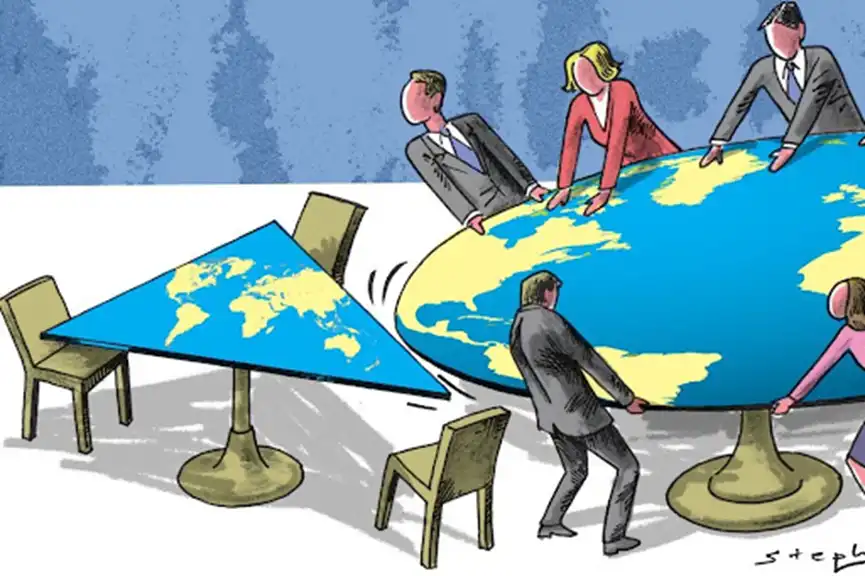 **
**
lead: 在过去的四十年中,战略三角概念已经在三角分析研究领域确定自己作为一个折中的理论框架。随着国际政治的演变,战略三角的文献也在相应地发展。具体来说,研究者们似乎已经成功地超越了“传统”的地区设置和概念化,通过测试现有的理论假设,发展新模型,并对三角关系的动态提供新的见解。在这个背景下,本文主要旨在提供关于战略三角学术文献的最新综述。本文还试图通过提出具体建议,说明三角关系的进一步参与和分析的空间。也结合台湾地区所处的大国博弈环境,进行了简要分析。
I. Introduction
In academic research in international relations, various theories, models and concepts have been developed to better understand the interactions between weak and powerful actors on the international stage, and to understand the motivations behind choice conflicts and cooperation. However, a systematic framework is still needed to truly understand an actor's foreign policy, bargaining power and tactics, and how it is directly influenced by its relationships with other actors. But the question is, what kind of framework is appropriate?
Our starting point will be the theory of international relations, especially the theory of balance of power. The original assumption of the balance of power school was that in the face of a rising power, other countries would adopt a "balance" strategy to confront potential hegemonic powers. Balancing strategies include internal balance, which usually refers to increased defense spending and military construction, and external balance, which involves forming alliances with other countries to fight hegemonic powers. Alternatively, minor powers (also referred to in the literature as small/weak powers) can also adopt a "bandwagoning" strategy to build relationships with more powerful powers. In this case, the secondary power is not challenging the major power, but aligning with the rising power in order to achieve the goal of neutralizing the threat and benefiting from the dominant position of the major power.
However, balancing or follower strategies are not without problems. Another strategy that secondary powers can adopt is to "group together." Huddling is not a specific policy, but a broad concept, referring to a series of strategies that lie between balance and follow-up. Specifically, when adopting a group strategy, secondary powers can simultaneously follow and balance with major powers.
Researchers have determined that under the umbrella of huddling, minor powers can adopt a wide range of strategies. In the context of maintaining a positive relationship (follower orientation) with the target country, secondary powers try to strengthen cooperation with the leading powers in political, economic and institutional cooperation through strategies such as participation, adaptation, entanglement and restraint. At the same time, secondary powers try to protect themselves (balance-oriented) through strategies such as indirect balance, complex balance and soft balance to confront hegemony.
The concept of huddling improves understanding of the broad policy options available to secondary powers, especially in the context of the Asia-Pacific region and the rise of China. However, in addition to criticism of the lack of analytical clarity, there is a key issue when trying to apply academic insights about balance, follower, and cohesion. That is, most academic research using these concepts has a strong bilateral focus and may therefore be too narrow and present an overly simplified view of reality. However, a multilaterally oriented approach may increase the complexity of the analysis and make it no longer operational. Therefore, triangular analysis is a possible research approach and represents a compromise position.
In this context, researchers believe that as a heuristic tool, the concept of triangular diplomacy explores the parameters and consequences of foreign policy behavior and responses that may be ignored when analyzing only bilateral and multilateral engagement. Many research on third-party influence models has moved beyond triangular analysis to study multilateral interactions. However, adding additional participants may lead to the operationalization of too many invalid variables.
Basically, the reason for studying three actors is that, on the one hand, the relationship (existing, potential and expected) between any two states is influenced by the relationship between those states and the relationship with the third actor. On the other hand, although there are always cases where there are more than three countries in the international system, in many cases, three countries are the core. Triangular diplomacy is very common in international relations due to the connections between competitors and allies, as well as the participation of major powers in regional politics. Some researchers suggest that triangular interaction be regarded as a "new analytical level in international relations."
The origins of triangular analysis can be traced back to the changing relationship between the United States, the Soviet Union, and China. Literature studying triangular relationships shows that analysts have used several ways to explore the interactions between these three actors. For example, Kissinger and others have extensively discussed this triangular relationship, which can be described as a "power politics approach," in which the interaction between three actors is the result of mutual interests and fears. In addition, the "Beijinology" approach focuses on the relationship between China's domestic politics and foreign policy, exploring how power struggles between different factions within China affect its foreign policy output in the context of the US-Soviet-China triangular relationship.
Nevertheless, the analytical model of "strategy" is the focus of this article. Mainly speaking, strategy can be regarded as the most widely used concept and the most theoretically developed concept in the study of triangular relations. Therefore, in a triangular system, it can provide important insight into the interactions and behaviors between three actors.
Nonetheless, the analytical model of "strategy" is the focus of this article. Fundamentally speaking, strategy can be regarded as the most widely used and theoretically developed concept in the study of triangular relations. Therefore, in a triangular system, it provides quite effectively important insights into the interactions and behaviors of three actors.
In this context, the primary goal of this paper is to provide a review of the latest research on strategy by reviewing the development of the concept of strategic triangle theory.
With the return of great power competition between the United States and China, rising geopolitical tensions, the war between Ukraine and Russia, and the recent escalation of relations across the Taiwan Strait, the strategic triangle may play a considerable role in analyzing hegemonic competition in the current international order and supporting the strategies of secondary powers in a dilemma.
In this article, we will first introduce the basic characteristics of the strategic triangle model and review the development of the concept since it was proposed in the 1980s. Then some suggestions are put forward to guide researchers on how to further promote the research and application of strategic triangle as a theoretical concept. The last section provides some concluding observations.
2. Strategy:the development of the concept
(1) The basic model of the strategic triangle and its expansion
The concept of strategic triangle is based on a groundbreaking article by Lowell Dittmer in the magazine World Politics. The article discusses the relationship between the three major powers: the United States, the Soviet Union and China. Importantly, this concept is not limited to studying these three powers, but also applies to other triangular relationships, as long as all participants must recognize the strategic importance of these three major countries, and the relationship between any two participants will be influenced by each participant's relationship to a third participant.
Ditmer identified three basic types of triangular relationships (Figure 1):
① "Three People"(ménage à trois):3 friendly relations;
② "romantic triangle":A friendly relationship between 1 "hub" player and 2 "edge" players, but hostility between the latter two;
③ "stable marriage":A friendly relationship between 2 "partners" and hostility towards 1 "outsider".
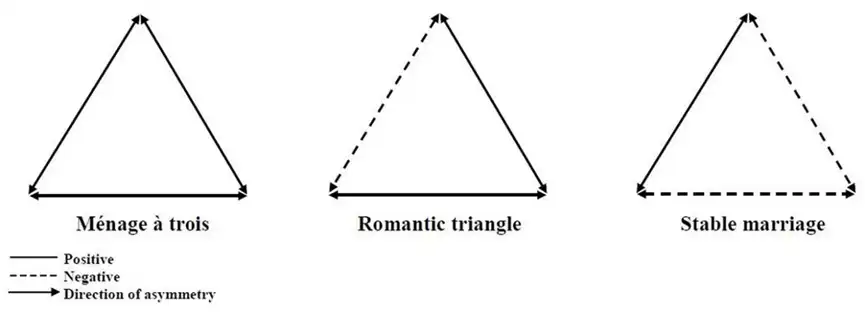 Figure 1 Three models of strategic triangle
Figure 1 Three models of strategic triangle
It is worth noting that in the evolving landscape of international politics, the study of strategic triangle theory has also developed, and its geographical scope and analytical complexity have also increased.
The geographical scope of the theoretical framework includes cases other than the US-China triangular relationship, including China-Japan-Russia, China-United States-Russia, North Korea-United States-China, U.S. -China-Japan, U.S. -China-India, U.S. -India-Russia, U.S. -Russia-Iran, Vietnam-China-United States, and U.S. -Australia-China. It is worth noting that Brantly Womack (American political scientist and emeritus professor of foreign affairs at the University of Virginia) believes that given the duration and clarity of the problem, the relationship between Washington, Beijing and Taipei can be regarded as a typical case of strategic triangle analysis. In fact, the framework has proven to be extremely fruitful in analyzing the triangular relationship between the United States, China and Taiwan. The exceptionally rich and diverse geographical scope of the strategic triangle academic field can be seen as proof of its added value as a hierarchical approach beyond other area-focused areas. In regional research, many people have studied regional triangles, but have not paid much attention to the general applicability of their arguments.
In reviewing the analytical development of the model, researchers continued to further broaden the scope of Ditmer's original concept.
For example, the criteria that are regarded as strategic triangular relationships have been redefined, namely:① All three participants are sovereign and rational agents;② The bilateral interaction between two agents depends on their relationship to the third agent;③ Each agent is considered crucial in the game because its betrayal from one side to the other can severely change the strategic balance (Figure 2). Therefore, based on the first two conditions, another condition needs to be added, that is, national security is in jeopardy.
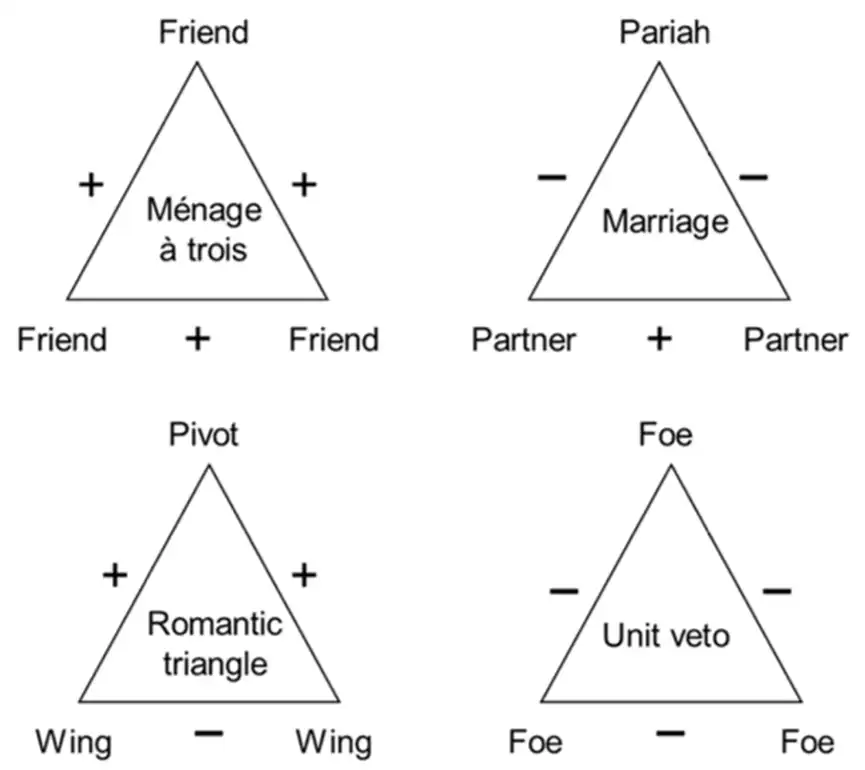 Figure 2 Various strategic triangle types
Figure 2 Various strategic triangle types
Along a similar line of thought, the researchers further distinguished between the "soft" triangle and the "hard" triangle. A soft triangle refers to a bilateral relationship that is influenced by the interaction of a third party but is not determined by it; a hard triangle refers to a relationship that is influenced by the three parties. In addition, in addition to the three ideal scenarios (namely,"threesome","romantic triangle" and "stable marriage"), there is a fourth possibility-"unit-veto", in which all actors oppose each other.
6 roles that actors can play in these 4 triangular relationships:You are a "friend" in a threesome, a "partner" or "outsider" in a stable marriage, a "hub" or "edge" in a romantic triangle, and an "enemy" in a unilateral veto. These roles can be ranked based on the number of positive relationships between the actor and two other actors and the type of relationship between the two actors. Being a pivotal role is the most advantageous, followed by friends, partners, margins, enemies and outsiders. In fact, the hub location is considered the most advantageous because it allows the hub to maintain a friendly relationship with the other two players while preventing them from cooperating against themselves. In addition, not only can the hub tilt in different directions to gain concessions from the "fringe", but the hub location allows an actor to play a role beyond its economic and military resources because it can reap benefits that are disproportionate to its resources.
The roles that actors may play in the strategic triangle can be further distinguished. For example, distinguishing between the central roles of "willing" and "unwilling" in a romantic triangle. Specifically, the willing central role aims to benefit from its superior position; the reluctant central role happens to be sandwiched between two competitors and seeks to maintain a good relationship with both.
(2) Add more factors to the mixed model
The further development of the strategic triangle concept stems from the need for researchers to incorporate additional factors into their analysis.
For example, considering that there are typically stronger and weaker actors in each triangle, a key factor is the balance of power in strategic triangles. Therefore, compared with strategic triangular relationships between major powers, it is crucial to distinguish between symmetrical and asymmetrical triangular relationships.
There are four main types of triangular relationships:
(a) Symmetric triangular relationship:X=Y=Z;
(b) Single-headed bidirectional asymmetric triangular relationship:X>Y=Z;
(c) Double-headed bidirectional asymmetric triangular relationship:X=Y>Z;
(d) Three-headed asymmetric triangle relationship:X>Y>Z.
In this context, the concepts of "head" and "direction" are both used to describe the distribution of power in a triangular relationship.
Among them,"single-head" means that only one participant is stronger than the other two. In the type X>Y=Z, X is the "head", which is the most powerful actor. "Two-way" means that this imbalance exists in two directions-that is, X has an advantage over Y, that is, X has an advantage over Z. "Double-headed" means that there are two players equally powerful and both are stronger than the third party. In the type X=Y>Z, X and Y form the pair of "double heads". "Bidirectional" means that this imbalance is reflected both between Z versus X and Z versus Y. "Single/double head" mainly describes a situation where power is more concentrated or evenly dispersed, while "two-way" highlights the complexity that needs to be dealt with when there are diversified influencing factors and may involve multiple aspects of consideration. The "triple" describes the imbalance of power between each party in the triangular relationship. "Triple asymmetry" means that there are significant differences in power between all participants. It reflects the completely different situations faced by each party and the completely different patterns of interaction, and can lead to complex outcomes.
In addition, the researchers attempted to study the problems and possible strategies for each actor in a general asymmetric triangle, especially the weakest actors (i.e., secondary powers). For example, while a weak country (as a partner) may be betrayed by a senior partner, playing a pivotal role may trigger negative reactions from two major countries. As a result, the role of a "group partner" may prove to be the most advantageous position (given the risks) because it provides reasonable security by forming an alliance with one giant while providing some flexibility in luring the pursuit of another giant. Sex and may provoke some countermeasures from its allies, who will not take group partners for granted.
Another research path integrates domestic factors (and constraints) from triangular analysis. In this context, researchers re-examined the relationship between the United States, China and Taiwan, combining the strategic triangle framework (i.e., the international level) with the power maximization calculation of the ruling elite (i.e., the domestic level). Three internal factors (such as democratic elections and party congresses) force its leaders to take certain actions/policies to maintain leadership. Other studies incorporate factors such as history, territory, values, and political differences into their analysis of the US-Japan-China triangular relationship. Research shows that all actors are bound by different values and nationalist sentiments that prevent them from improving their relationships with each other.
The new model integrates culture into strategy and policy research. For example, the applicability of the classic triangular model is challenged for the interaction between three countries (namely Wei, Qi and Chu). Because the latter only applies to a specific time and context, namely, the confrontation between major powers during the Cold War. To understand contemporary international relations, existing theories can be supplemented by introducing new theoretical methods (such as social constructivism) and connotations involving national and cultural particularities.
Finally, against the background of external factors, Wu Yushan (professor of the Department of Political Science at National Taiwan University and academician of the Academia Sinica) pointed out:"In today's world, it is almost impossible for two countries to have no direct connections at all and to define their bilateral relationship entirely by their interactions with third parties." It should be noted that when determining bilateral relations, external factors will always be added to existing internal factors. The "double triangle" model can explain how the structure of the U.S. -Soviet Union-China triangle shapes the layout of the U.S. -China-Taiwan small triangle (see Figure 3).
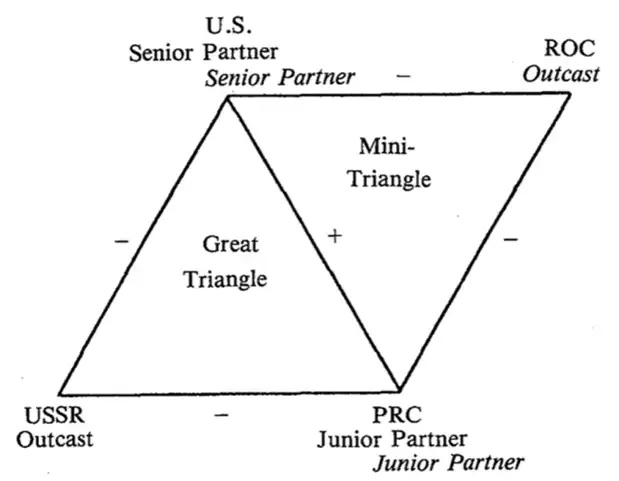 Figure 3 Double triangle in the late 1970s
Figure 3 Double triangle in the late 1970s
Obviously, the Sino-US reconciliation was aimed at confronting the Soviet Union, which determined the U.S. policy towards Taiwan. By transferring diplomatic recognition from Taiwan to the mainland, the United States has established a stable relationship with China, making Taiwan an outsider. Therefore, as long as the United States maintains good relations with China, external factors (the Grand Triangle relationship) will prevent closeness between the United States and Taiwan.
(3) Methodological considerations
Regarding research methodology, some researchers recognize that by quantifying the relationship between the three actors, there is an opportunity to develop this concept into a more complete theory.
For example, you can calculate the benefits gained by each role the agent can play in a triangular relationship. The calculations based on the three types of triangular relationships (i.e.,"threesome","romantic triangle","stable marriage" and "unilateral veto") are as follows:For friendly relations, both parties receive +1 points. In contrast, both sides in the hostile relationship receive a score of-1. The results show that the role benefits in strategy are:Hub (+3)> Friends, Partner (+1)> Edge, Enemy (-1)> Outsiders/Isolators (-3). Ranking the scores of the strategic triangle roles allows you to evaluate the rewards of different actors in the triangle.
The calculation of national capabilities can be more accurate. In an improved version of strategic triangulation, each relationship is weighted based on the relative strengths of the actors involved. After adding dimensions such as economic (measured by GDP) and military (measured by military spending), the analysis concluded that of all the roles that actors may assume, hubs receive the best rewards, while outsiders receive the worst rewards.
In addition, in order to solve the problem of triangular power asymmetry, the researchers proposed a linear function to quantify the degree of friendliness between actors. The degree of friendship is determined by mutual security and economic interests. Considering security interests, the friendliest scenario would be to form a military alliance, while the least friendly scenario would be to declare war. In terms of economic interests, the friendliest scenario would be opening domestic markets, while the least friendly scenario would be economic blockades and sanctions. Therefore, the US-China-Taiwan triangular relationship has been transformed into six sets of relationships (US-China/Taiwan, China-US/Taiwan, and Taiwan-US/China), as shown in Figure 4.
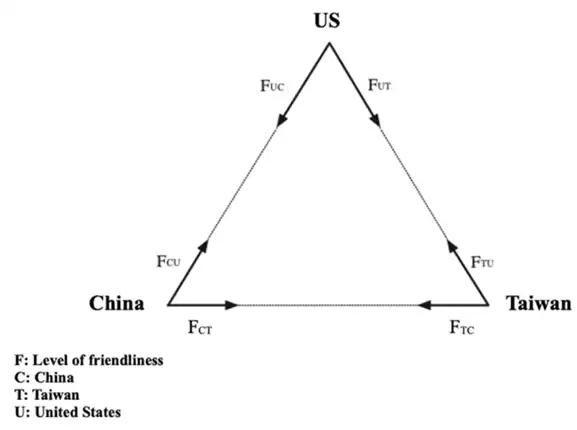 Figure 4 The degree of friendship between the United States, China and Taiwan
Figure 4 The degree of friendship between the United States, China and Taiwan
Another research idea is to build a "two-tiered strategy" model to study the impact of domestic politics on the triangular relationship between the United States, China and Taiwan. The model is derived from rational choice and veto theory, assuming that:
① Each country's attitude towards other countries within the strategy is determined by domestic politics (i.e., the collective preferences of the ruling elite);
② The depiction of a triangular relationship extends from the traditional dichotomy (i.e., strategic "positive/negative" relationships) to a continuous space where the closeness of countries reflects differences in their interests;
③ Changes in domestic leadership and the country's ability to change the status quo are the main variables affecting strategy.
The results show that this revised model allows analysts to explain how individual preferences aggregate into collective choices.
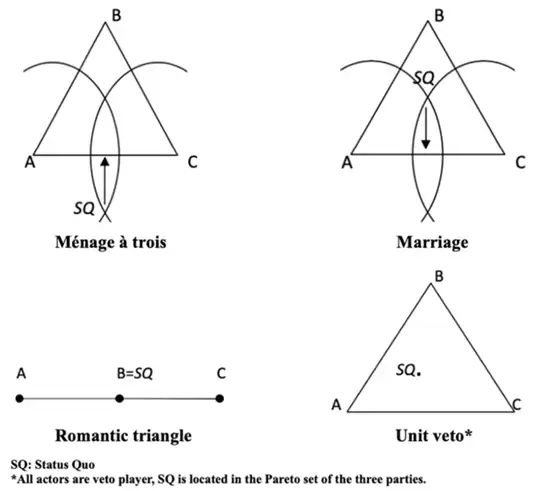 Figure 5 Triangle diagram of two-layer strategy
Figure 5 Triangle diagram of two-layer strategy
Another view is that the strategic triangle is not always equilateral, but can be equilateral. In other words, the classic strategic triangle theory may be too simplistic to accurately describe some strategic characteristics. For example, the triangular relationship between China and the United States may be unbalanced. Specifically, US-Japan relations have always been positive, while Sino-US relations have fluctuated many times. The researchers deduced the length of each side of the triangle based on the closeness between countries. As a result, the United States and Japan will be closer to each other, and the two countries will be farther away from China (see Figure 6). Based on this approach, researchers can more effectively assess the enthusiasm of each bilateral relationship.
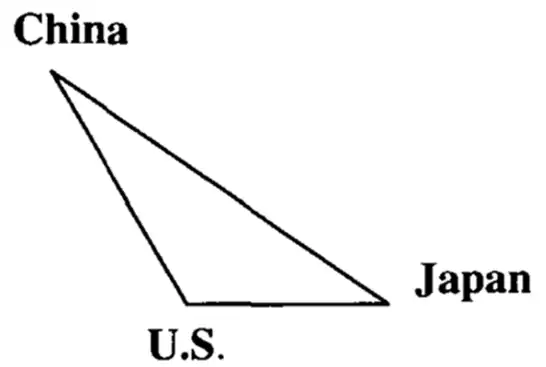 Figure 6 Non-equilateral strategy 3. Strategy:research prospects
Figure 6 Non-equilateral strategy 3. Strategy:research prospects
The theoretical development of the strategic triangle concept is booming and divorced from the traditional three-party interactive setting. As a result, researchers face the challenge of increasing, revising, and expanding the scope of analysis at all levels. This part of this paper explores this idea by providing possible research paths and proposing empirical, conceptual and methodological suggestions.
1. The United States, China and Asia are not actors that must be considered
One view is that the end of the Cold War does not mean the end of triangular politics. Although researchers have indeed gone beyond Ditmer's original focus on the U.S. -Soviet-China major-power triangle, existing academic research still seems difficult to rule out (at least) one of the major powers in Ditmer's original triangle. In addition, most case studies seem to focus on new regional focuses that represent new post-Cold War geopolitical competition. In other words, strategic analysis is often associated with the theme of the rise of Asia in general and China in particular.
Against this background, some researchers believe that even after the end of the Cold War, triangular politics still exists and is not limited to Asia. In actual analysis, options can be diversified, including more countries and different regional focuses.
For example, the researchers conducted a comparative analysis of the US-China-Taiwan triangle and the German-Russia-Austria/Hungary triangle, especially since the hub could not be operated between the wings, transforming the "romantic triangle" into a "stable marriage." In doing so, we can gain a deeper understanding of triangular logic by using theory and analogies with historical cases. Another study analyzed the strategies of minor powers in a strategic triangle of great power competition. It also compares the US-China-Taiwan triangular relationship with the European Union (EU)-Ukraine-Russia triangular relationship. These explorations have promoted the development of international relations theory in areas they ignore:Small states, asymmetric relationships, triangular interactions and geostrategic analysis, and provide us with the opportunity to apply the strategic triangular framework in a European rather than Asian regional context.
Similarly, research has focused on the interaction between the EU, Ukraine and Russia during the 2013-2015 Ukraine crisis and Russia's annexation of Crimea. The researchers tried to explain the dilemma of strategic restraint among the three parties in the context of energy politics and natural gas relations. Discussions on the U.S. -Russia-Iran triangle focus on how Iran's abandonment of nuclear weapons has led to fierce competition and limited cooperation between the United States and Russia. The United States needs Russia's support on the nuclear issue, and Iran needs to use Russia to withstand U.S. pressure, which ultimately puts Russia in the most favorable position in this strategic triangle.
These work expands the geographical scope of the Strategic Triangle and effectively demonstrates how multi-faceted research on the Strategic Triangle concept can be developed. For example, the vast majority of contributions to the strategic triangle have focused on case studies. However, research that conducts comparative analysis helps advance the generalization of the concept by testing the applicability of various assumptions in time and space. At the same time, a series of studies have shown that strategic triangle research can move away from macro-level analysis that examines decades-old relationships and focus on limited time frames (such as a few years) and specific policy areas (such as energy or nuclear negotiations).
(2) Thinking beyond boxes and triangles
Wu Yushan believes that other conditions being equal, any country that finds itself in a strategic triangle game will want to enhance its role in the game and thereby increase its returns. In addition, of the three roles available to secondary powers (i.e. partner, group partner and hub), the role of group partner may be the most beneficial to secondary powers. Research on triangular clusters shows that countries may employ a range of strategies to avoid making immediate decisions, such as balance, follower, or neutrality. This approach is widely used in Southeast Asian countries to seek compromise while choosing one party at the expense of the other. Wu Yushan also pointed out that in the context of the triangular relationship between the United States, China and Taiwan, the Taiwan authorities have adopted a group strategy.
Despite this, Wu Yushan pointed out that a key shortcoming of the strategic triangle framework is that it focuses too much on triangular relations without paying sufficient attention to the overall international system. Some researchers also believe that while triangles do not exclude the actors themselves, the focus on their interactions often conceals the key role played by other states and non-state actors in this dynamic. The limitations of the strategic triangle relationship are limited to the superpower, which seriously underestimates the potential influence of small and medium-sized participants in the region.
Here, we propose that although there are asymmetric power relations among secondary powers, secondary powers themselves are also strategic actors, not just passive pawns in the geopolitical game. However, when looking at strategic triangle theory, it seems that the range of options available is quite limited. We believe that in the face of challenges from external influences, secondary powers have the ability to choose alternative courses of action within and outside the triangle, rather than just being limited to specific options within the triangle, or moving to a more moderate and/or safer triangle. After all, relations between minor powers and major powers rarely exist in isolation. On the contrary, asymmetric strategies (such as the US-China-Taiwan triangle) operate in environments that are crowded with other (mostly minor) powers. While responding to this triangular setup may be a difficult task for secondary powers (as the weakest actors within the triangle), it may help expand the range of strategic options available to them in interacting with actors outside the strategy.
A study of the Vietnam-China-U.S. triangular relationship may provide a starting point for further exploration. As the weakest actor in this asymmetric triangle, Vietnam should not only rely on options within the triangle, but should also seek options that transcend it. The researchers suggest that to reduce/manage uncertainty, Vietnam could use its association with regional organizations (such as ASEAN) or pre-commitments to transnational rules and regulations (such as WTO).
Likewise, North Korea needs to consider how to adjust its intentions in the Washington-Beijing-Pyongyang triangle and avoid becoming an outsider. Specifically, since 2017, North Korea has been improving relations with Russia and South Korea, i.e., external actors, while using denuclearization negotiations as a bargaining chip in dialogue with the United States and China. As a result, North Korea has transformed from an outsider to a partner in a strategic triangular relationship.
In this context, we believe that in some cases (especially in the context of asymmetric triangles and minor powers), we must transcend both traditional thinking and the limitations of triangles when thinking about issues. Doing so raises some interesting questions, especially when we add another agent to the equation:Can a secondary power use its relationship with a fourth actor to strengthen its current position or try to compensate for its weak position within the triangle? What role should the fourth actor play in relations with secondary powers? Do we have another strategy that needs to be considered in the analysis (such as a two-level triangular model)?
(3) Strategic triangle:Qualitative rather than quantitative
As mentioned earlier, the development process of the concept of strategic triangle theory is related to the development process of quantitative methods. Researchers have developed various quantitative measures to expand their understanding of the interactions between the three actors and the value of the options and roles they may assume. In contrast, most strategic triangle studies that do not follow a quantitative research path tend to stay at a descriptive level, using mainly sub-level sources (such as existing literature) and, to a lesser extent, first-hand sources (such as official documents). This research status is either a historical descriptive narrative of a single triangle or a vertical quantitative analysis that identifies the existence of a triangle without explaining the behavior of the three members.
Some researchers suggest using online databases (such as the Global Event, Language and Intonation Database) to identify keywords (i.e. threats/urges/maintains the status quo) in media reports during specific periods of time to help clarify the simultaneous influence of third parties. However, there are still gaps in using incident databases to analyze U.S. influence in cross-Strait relations. Specifically, many behind-the-scenes actions and unofficial connections that often cannot be revealed in official news occurred before and after major events. Therefore, this method requires qualitative research based on interview records, memoirs and supplements to official archives.
Some researchers have emphasized the importance of interviewing government officials. A hybrid approach can be adopted, that is, an event database is used for data collection and statistical software is used for data analysis. However, although statistical analysis is based on the state as a unified actor, other domestic factors, such as public opinion, cannot be calculated, making it difficult to verify (even using public opinion surveys) whether the foreign policy-making process accurately reflects public opinion. Therefore, elite interviews can be used to bridge this gap.
In this context, we believe that more attention should be paid to incorporating qualitative research methods into strategic triangle research. One example is the integration of process tracking into the triangular research design to isolate the impact of interactions on subject behavior. In addition, the added value of process tracing compared to historical research is that it can go beyond in-depth narratives, as it transforms historical narratives into analytical causal explanations in clear theoretical forms. In addition, since process tracing is often used as a case-centered research strategy, it will allow analysts to break down the number of possible observations, thereby overcoming the n = 1 problem. The n=1 problem refers to a series of statistical and inferential challenges caused by too small a sample size (e.g., only one unit of observation).
Regarding qualitative data collection methods, researchers can rely more on archival research and elite interviews. In the context of interviews, the importance of linking interviews to research strategies such as process tracing can be emphasized. Arguably, the most relevant use for process tracing is conducting elite interviews to determine the decisions and behaviors behind events or series of events. In addition, we suggest that researchers should interview not only government officials, but also former officials and other experts who can provide in-depth insights into the cases reviewed. In addition, regarding qualitative data analysis methods, more attention can be paid to the use of methods such as content and discourse analysis.
IV. Conclusion
In recent decades, strategic frameworks have been widely applied to triangular relationships in various regions and periods.
A key advantage of the strategy is its applicability as an analytical tool that can simplify complex international environments. At the same time, the strategy maintains a compromise attitude in maintaining conceptual and methodological flexibility. In addition, applying the concept of strategy to specific triangular relationships can provide a better understanding of the impact of each actor on the triangular relationship and the strategies they adopt based on their role in the triangular relationship.
Importantly, the literature on strategic triangles continues to evolve, expanding Ditmer's original model in multiple ways and providing new insights. Although the regional focus of the strategic triangle was originally the U.S. -Soviet-China triangle, analysts are now applying the concept to different combinations of countries. Similarly, researchers are trying to build more complex models by incorporating more variables into the equations and adopting new methodologies to study triangular relationships.
Despite this, the Strategic Triangle is still far from realizing its full potential. In this article, we believe that analysts should continue to transcend "traditional" areas, concepts and methodological frameworks. Specifically, by ① carefully selecting case studies that can provide more (or new) research, comparisons, and expanded geographical scope and review time periods;② focusing on actors and strategies outside the triangle; and ③ incorporating more qualitative research methods into the analysis, researchers can further promote the development of this research field.
attention to our
